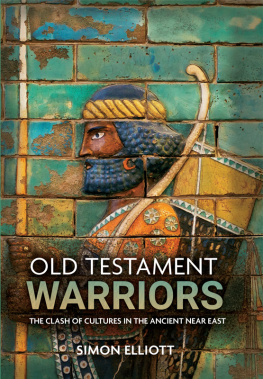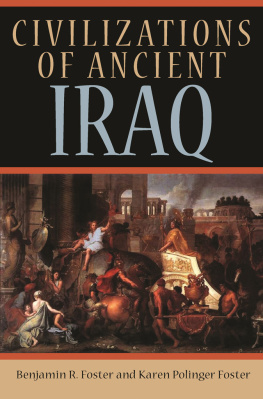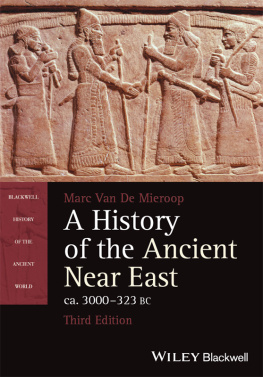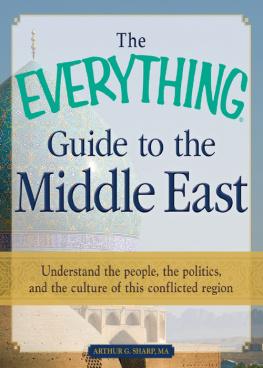Stop for a moment. We have a free bonus set up for you. The problem is this: we forget 90% of everything that we read after 7 days. Crazy fact, right? Heres the solution: weve created a printable, 1-page pdf summary for this book that youre reading now. All you have to do to get your free pdf summary is to click here . Once you do, it will be intuitive. Enjoy, and thank you!
Introduction
Screams pierced the night. Within the gleaming walls of Babylon, the young king Nebuchadnezzar II lay groaning in his palace. His disturbing dream kept him from sleep, but he couldnt remember the dream. Calling his scribes, astrologers, and sorcerers, he demanded, I must know what it means!
Long live the king! Tell us your dream, and we will interpret it for you.
No! said Nebuchadnezzar. You tell me what I dreamed! If you cant, Ill have you torn into pieces! But if you can tell me my dream and its interpretation, I will shower you with gifts and honor.
The Chaldean astrologers looked at each other in horror. No king on earth has ever asked such a thing! Only the gods can tell you your dream.
Furious, Nebuchadnezzar ordered the execution of all Babylons wise scholars, astrologers, and sorcerers. The commander of the kings guard arrived at the house of Belteshazzar, one of the kings advisors, to arrest him. When Belteshazzar heard the kings order, he said, Dont kill the wise men. Take me to the king, and I will tell him the meaning of his dream.
Is this true? Nebuchadnezzar asked Belteshazzar. Can you tell me what I dreamed and interpret it?
God in heaven who reveals mysteries has shown you the future, Belteshazzar replied.
In your vision, you saw a huge, shining statue of a man. The head of this frightening image was gold, its chest and arms were silver, its belly and thighs were bronze, its legs were iron, and its feet a mixture of iron and clay. Suddenly, you saw a massive boulder strike the feet of the statue, smashing them into pieces. The entire image crumbled, but the boulder grew into a magnificent mountain that covered the earth.
Now, this is the interpretation of your dream. You are the king of kings, the head of gold. After you, an inferior kingdom will arise. Then a third kingdom of bronze will rule the earth. The fourth kingdom of iron will shatter and crush all other kingdoms. This kingdom will then be divided. As the feet of the statue were partly of iron and fired clay, it will be partly strong and partly brittle.
The boulder that grew into a mountain covering the earth is an unshakable kingdom that will bring all other kingdoms to an end, but it will stand forever. God has told you what will happen in the future.
Nebuchadnezzar nodded. It was his dream! He promoted Belteshazzar as ruler over the province of Babylonia and the chief of his scholarly advisors and magicians. Then he reflected on the origins of Babylon and where he would take his kingdom of gold.
While the Babylonian Empire was indisputably a formidable force on the ancient worlds stage, it was much more! As a horrific drought gripped the Middle East around 2200 BCE, Semitic nomads swept into Mesopotamia, the land between the Euphrates and Tigris Rivers, seeking pasture for their flocks. They never left. Instead, these Amorite shepherds settled down, developed Babylon into a stunning city, and conquered the rest of Mesopotamia. That was only part of Babylons metamorphosis.
After the Hittites sacked Babylon, the Kassites of mysterious origins took possession of Babylon; then, eventually, Babylonia fell under Assyrian control. Finally, the Chaldeans led Babylon into the stunning Neo-Babylonian Empire, with a rule stretching from the Persian Gulf north to Turkey and down along the entire eastern Mediterranean coastline to the Red Sea. The Chaldeans transformed Babylon into a breathtaking city, with massive walls glistening in the sun, covered with blue-glazed bricks and mosaics of dragons, bulls, and lions. A towering ziggurat rose in the city center, near the palace with its brilliant yellow and blue walls.
The Babylonians were ingenious in the sciences and mathematics. They observed the night skies, recording the movement of the planets and cataloging the constellations. They studied the Earths rotation using mathematical models and predicted lunar and solar eclipses. The Babylonians took mathematics to astonishing heights, understanding square roots, fractions, algebra, trigonometry, and geometry and solving cubic, linear, and quadratic equations. They knew how to measure the diameter and circumference of a circle and calculated pi () to a value of 3.125. They used the Pythagorean theorem over a millennium before Pythagoras was born. The Babylonians were a powerhouse of innovation and scientific-mathematical development.
This book will unpack the spectacular history of Babylon and the Babylonians. What civilizations preceded them in Mesopotamia? How did Babylon rise to ascendancy? How did the Babylonian religion and worldview inform their lifestyle and achievements? What was exceptional about their renowned leaders, such as Hammurabi and Nebuchadnezzar II? How did they rise, collapse, and rise again two more times?
This history will unlock the answers to these questions and many more in a thoroughly researched, comprehensive, yet easy-to-understand narrative. Whether you are a history buff or simply curious about the Babylonian Empire, this book will bring the remarkable Babylonians to life, revealing how their story unfolded. You will gain an in-depth understanding of how Babylon left its mark on Mesopotamias culture and history. And not just Mesopotamia, but the world!
Whats the point of reading history? Learning history is fascinating: its all about change. Examining Babylon's three-time rise and fall is truly an exploration of change. Which enterprising leaders galvanized their people into seemingly-impossible conquests? What events triggered Babylons three cataclysmic falls? How did collaboration stimulate the explosion of mathematical and scientific knowledge? Understanding the history of change in Babylon helps us analyze how political, economic, and cultural change might happen in our own society.
Chapter 1: The Pre-Babylonian Period
What do the worlds first city, first sailboats, and reptilian women statuettes have in common? These were all produced by the Neolithic-age Ubaid culture (55003800 BCE) that preceded the Sumerian and Akkadian civilizations. Slightly earlier than the Ubaid culture, the Samarra people settled in central and northern Mesopotamia around 6000 BCE. The Samarra and Ubaid cultures overlapped and shared innovations in pottery and simple irrigation techniques; they traded in alabaster, carnelian, copper, obsidian, and turquoise. About 3,700 years later, the city of Babylon arose approximately where the Ubaid and Samarra cultures once intersected.










